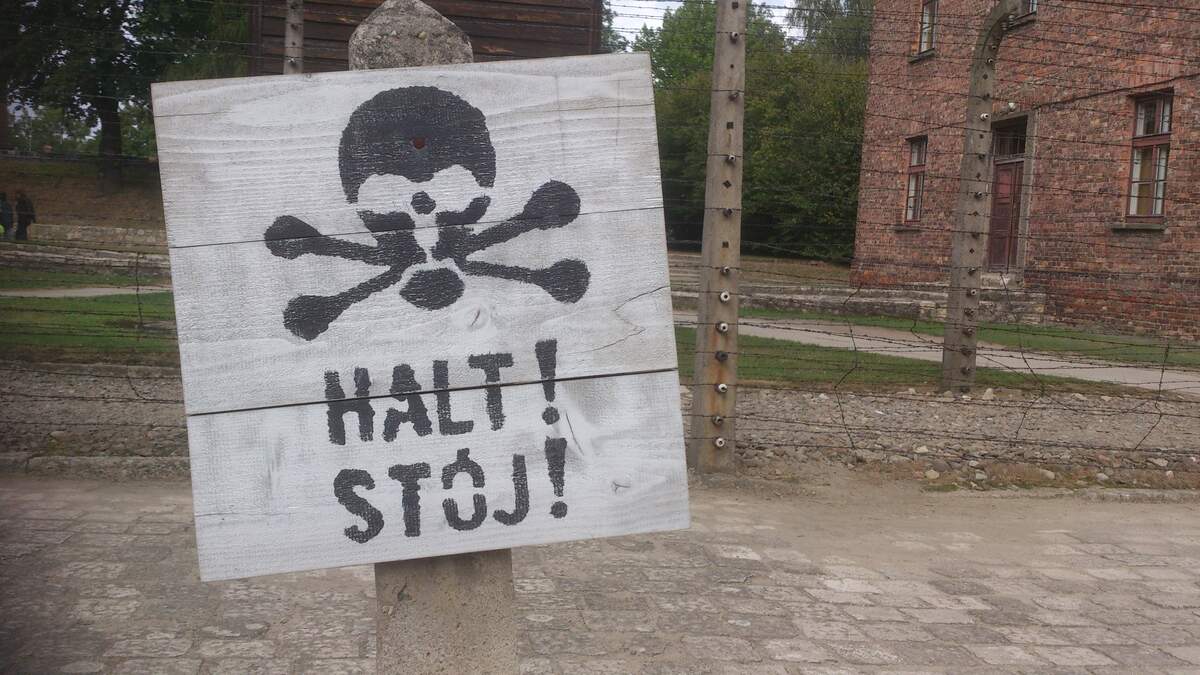

International Day of Commemoration in memory of the victims of the Holocaust
Also known as
Auschwitz Liberation Day
International Holocaust Remembrance Day
Observed
annually on January 27th (since 2006)
Dates
Founded by
United Nations General Assembly (UNGA) on November 1st, 2005
Hashtags
#InternationalDayOfCommemorationInMemoryOfTheVictimsOfTheHolocaust
#DayOfCommemorationInMemoryOfTheVictimsOfTheHolocaust
#AuschwitzLiberationDay
#InternationalHolocaustRemembranceDay
#HolocaustRemembranceDay
Sources
https://en.unesco.org/commemorations/holocaustremembranceday
https://en.wikipedia.org/wiki/International_Holocaust_Remembrance_Day
https://encyclopedia.ushmm.org/content/en/article/international-holocaust-remembrance-day
https://www.amazon.com/dp/1598888587?tag=checkiday08-20
https://www.un.org/en/holocaustremembrance/
International Day of Commemoration in memory of the victims of the Holocaust, commonly known as International Holocaust Remembrance Day, commemorates those who lost their lives during the Holocaust, the genocide perpetrated by the Nazis and their collaborators during World War II which killed 6 million Jews—about one-third of their total number—as well as 11 million others. This solemn remembrance was designated with United Nations General Assembly resolution 60/7, on November 1, 2005, during the 42nd plenary session. The resolution and the day were initiated by Israel.
Earlier in the year, on January 24, a special session had been held to mark the 60th anniversary of the liberation of Nazi concentration camps and the end of the Holocaust. The largest Nazi concentration camp and death camp, Auschwitz-Birkenau, was liberated by the Russians on January 27, 1945. January 27 became the date of International Holocaust Remembrance Day, which was first held in 2006. There is a twofold rationale behind the day: It remembers those who lost their lives in the Holocaust on account of the Nazi regime, and it promotes the education of future generations throughout the world about the horrors of the Holocaust.
In addition to these two goals, the resolution that designated the day did a few other things. It rejected denial of the Holocaust and condemned all religious intolerance, incitement, harassment, or violence against persons or communities based on ethnic or religious belief; it called for the active preservation of Holocaust sites that were locations of Nazi death camps, concentration camps, forced labor camps, and prisons; and it called for the establishment of a United Nations program that would do outreach and mobilization of society for the remembrance of and education about the Holocaust.
Before International Holocaust Remembrance Day was created, there had been other holidays marking the Holocaust. In the United Kingdom, there has been a Holocaust memorial day on the same date since 2001. In Germany, Tag des Gedenkens an die Opfer des Nationalsozialismus (The Day of Remembrance for the victims of National Socialism) was established in 1996. Other countries also have established their own remembrance days, often connected to dates related to the Holocaust. For example, Israel marks Yom HaShoah on the 27th day of Nisan. International Holocaust Remembrance Day is a national event in various countries, and 39 countries participated in commemoration ceremonies for the holiday in 2015. Official commemorations are held at the Headquarters of the United Nations in New York City, as well as at UN offices around the world, in state UN offices, at the United States Holocaust Memorial Museum, and at Yad Vashem. Since 2010, the UN has designated specific themes for the annual celebrations.
The Nazis, who thought they were a superior race, came to power in Germany in 1933. Believing Jews were an inferior race and also a threat, they soon began a systematic persecution of them, keeping them out of social, economic, and cultural life, and putting pressure on them to leave the country. The Jewish population of Europe at the time was over 9 million. Eventually, during World War II, the Nazis attempted their "Final Solution"—the murdering of all Jews in Europe. The carrying out of this appallingly evil plan was known as the Holocaust; the word "holocaust" comes from a Greek word which means "sacrifice by fire."
After the start of the war, after Germany gained occupation of Poland, they placed the Jewish people into ghettos there, deporting them from all the areas they controlled. Hundreds of thousands died in the ghettos. In June 1941, the Soviet Union was invaded. Following this, the Einsatzgruppen and Waffen-SS, with support from the Wehrmacht, went behind enemy lines. They conducted mass shootings and used gas vans to kill Jews, Roma, and Soviet and Communist Party officials. The mass shooting of Jews continued throughout the war, many times being done by the German Order Police. It is believed that 1.5 million Jews were killed this way.
The use of stationary gas chambers began in late 1941. Almost 3 million Jews were deported to Nazi-occupied Poland between 1941 and 1944. Transported by train, most of them were sent to extermination camps such as Belzec, Chelmno, Sobibor, Treblinka, and Auschwitz-Birkenau. Poison gas was used to kill most of them. Some were sent to do forced labor in ghettos or camps or to concentration camps in Nazi-controlled areas in Poland or the Soviet Union, where most died from starvation, disease, or from being shot after becoming too weak to work. Starting in 1942, Jews were mainly being sent to death camps, although they would be told they were being sent to labor camps, and the Nazi's euphemistically called what they were doing "resettlement to the east."
Other groups besides Jews were persecuted—and died—on account of perceptions that they were racially or biologically inferior, including the Roma, who were often called "Gypsies," some Slavic people like Poles and Russians, Soviet prisoners of war, blacks, and people with disabilities. Over 250,000 Roma were killed, as were over 250,000 mentally or physically disabled people, who mainly were Germans living in institutions. As many as 2 or 3 million Soviet prisoners of war died, many being outright murdered, and even more Soviet citizens died. People were also targeted because of their political, ideological, or behavioral backgrounds, including Communists, Socialists, Jehovah's Witnesses, and homosexuals. In total, about 11 million from these groups lost their lives.
By 1945, the Final Solution was almost two-thirds complete. As the Allies approached and the end of the war neared, Nazi SS guards moved prisoners by rail or by marches—known as death marches—so that they wouldn't be liberated. The Allies were able to liberate concentration camps and save Jewish prisoners who were on the march between one camp and another. The marches stopped on May 7, 1945, the day that Germany surrendered to the Allies. The next day is known as V-E Day. Following the Holocaust and the war, over 250,000 Jews found refuge in displaced persons camps. Between 1948 and 1951, about 136,000 displaced Jews moved to Israel. Others resettled in the United States and elsewhere, and the last camp for Jewish displaced persons closed in 1957.
Today we remember those who lost their lives on account of the Nazis, and we work to promote education around the world about the horrors of the Holocaust, to ensure that something so horrific never happens again. We stand for human rights around the world and stand up against any form of oppression or injustice that may still be found.
How to Observe International Day of Commemoration in memory of the victims of the Holocaust
The day should be spent remembering those who lost their lives in the Holocaust, and by promoting education about the Holocaust in order to prevent something like it from ever happening again. The following are some ways that the day could be observed:
- Attend an official commemoration. Some locations where commemorations take place include the Headquarters of the United Nations and other UN offices, the United States Holocaust Memorial Museum, Yad Vashem, and at Heldenplatz in Vienna.
- Visit a Holocaust site.
- Explore the Holocaust and United Nations Outreach Programme.
- Watch a documentary about the Holocaust such as Shoah or Auschwitz: Inside the Nazi State.
- Watch a feature film that deals with the Holocaust, such as Schindler's List, The Pianist, or Life is Beautiful.
- Read a book on the subject of the Holocaust, such as The Diary of a Young Girl, Night, or Survival in Auschwitz.





















